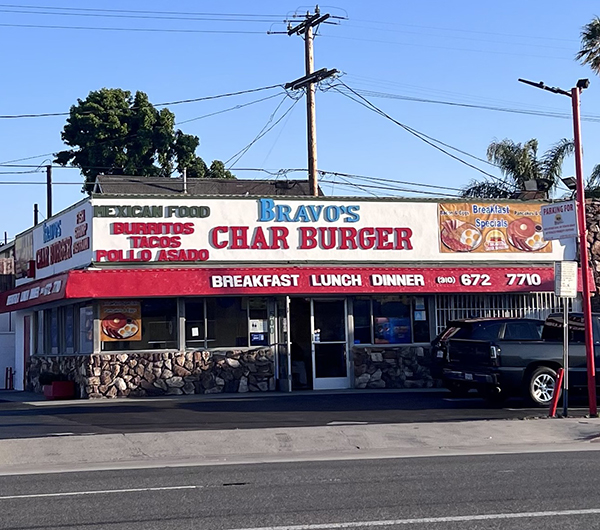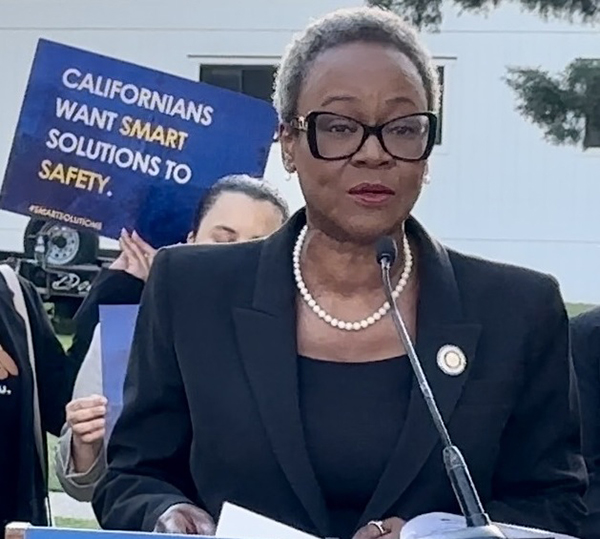By Emilie St. John
Contributing Writer
INGLEWOOD — The Planning Commission is considering imposing a 1,000-foot distance requirement between fast-food restaurants.
City Planner Bernard McCrumby presented the proposed guidelines to the commission during its July 5 meeting where he explained that over the past few years a number of studies have been conducted, on the over-proliferation of fast-food restaurants in minority communities and why they disproportionately target lower-income communities and Inglewood is no exception.
The 34-page staff report proposed the proposed 1,000-foot distance requirement that would be similar in scope to current requirements imposed on hair and nail salons.
According to the city Finance Department, there are more than 200 active fast-food/take-out establishments in the city.
“There are approximately 15 fast-food establishments, with drive-thrus, along the 2.6-mile corridor between LaCienega and Crenshaw,” the staff report said. “In order to determine over-proliferation, the city used McDonald’s as a benchmark to compare with nearby cities.
“I applaud the local government’s effort to improve the food landscape for the health of the citizens of Inglewood. It’s more than others city councils are willing to do,” said Steven Graves, a professor of geography who studies public health issues at Cal State Northridge
City officials compared Inglewood with the South Bay, Culver City and Pasadena and determined an over-proliferation exists based on how many McDonald’s are in each city.
“I don’t like the analysis they used and could have come up with something far better than a McDonald’s per square mile ratio,” Graves said. “It’s not really very informative and seems like pretty scant evidence upon which to base legislation.”
The Planning Department is proposing special use permits for new and expanded free-standing fast-food uses.
“By requiring a [permit] for new and expanded free-standing fast-food uses we will better ensure an additional level of review for potentially sensitive uses and the ability to apply site-specific conditions,” McCrumby said.
“We are also requiring a [permit] for drive-thrus in order to apply site-specific conditions related to traffic, vehicle queuing, on-site circulation, etc. to ensure they are adequately addressed,” he added.
Site-specific conditions include vehicle lineups for a minimum of eight cars, no obstructed parking spaces or the public right-of-way.
The conditions are an ongoing concern at the In N Out site which regularly sees customers lining up on Century Boulevard, which obstructs westbound traffic and those entering the shopping center northbound.
The city also is considering establishing a 1,000-foot distance requirement between new free-standing fast-food restaurants to ensure “no continued over-proliferation of these types of uses”
The staff is seeking to revise the Inglewood Municipal Code to define dine-in versus fast-food and adding definition of ghost kitchen and differences between restaurants and outdoor restaurants.
McCrumby gave no indication of how they would define the various types of restaurant.
“The Social Justice Learning Institute has a strong history of advocating for health in the built environment, particularly in Inglewood, building growing spaces, making healthy food available and even pushing for policy change,” the organization said in a statement. “We’ve witnessed the Inglewood City Council take steps toward a healthier built environment. Over the years they’ve made Inglewood a healthy eating active living city, enforced a moratorium on fast-food establishment development and more.
“This ordinance is a critical addition and the hope is that our current council can appropriately tackle the difficult task of defining what fast-food is in a way that looks out for locally owned mom and pop restaurants and their growth in Inglewood’s future,” the statement added.
Planning Commissioner Aide Trejo says the city’s reputation made fast-food a viable option for the demographics, and now that its changing, so does the types of food businesses being offered.
“My data shows that part of Inglewood is indeed a ‘fast-food swamp’ and that health outcomes in Inglewood are poor,” Graves said. “The food landscape has something to do with it, but dietary habits and income are the largest causal factor.”
Planning Commissioner David Rice offered perspective to the commissioners on what a 1,000-foot distance looks like and how it could affect revenue for the city.
“I took out my ruler and measured McDonald’s on Century and Prairie down to the Jack in the Box and that is 403 feet, which puts me almost to Hawthorne Boulevard before we reach 1,000 feet,” Rice said.
No one spoke during the public hearing on the subject. One member of the public spoke on the presentation being “great.”
A commissioner asked about the status of Raising Canes, which sold its land at the corner of Manchester and Prairie due to the reconfiguration of planned stops for the Inglewood Transit Connector.
“They were displaced because that site is now part of the ITC project and they would fall into a different criteria and more of a negotiation,” said Economic and Community Development Director Christopher Jackson.
“If you have a drive-thru restaurant within 1,000 feet and you want to add additional square footage to your existing business, you would not be able to do that,” Jackson said.
Commissioner Rice gave the example of Bravo Burgers on Manchester Boulevard being across the street from McDonald’s and asked if they would be able to expand, and add a drive-thru window, under the proposed ordinance.
“No, they would not,” Jackson said. “You have to look at how fast-food is transforming and why commercial kitchens become very important, because a lot of their business is coming via apps and are picking up a lot of the business.”
Rice was concerned about long-time family-owned businesses being exempt from expanding under the proposed changes.
“A lot of these free-standing buildings – the mom and pops don’t own those,” Jackson said. “Certainly, this benefits the property owner but we have been actively trying to get our smaller business owners to buy property.”
“If the [owners] aren’t excited about having mom and pops there, and rather have franchises, you are going to see mom and pops go away,” Jackson said.
The Planning Commission voted 3-1 to pass the proposed 1,000-foot separation regulations, which will now move to the City Council for approval.
Commissioner Rice voted no and Commissioner Carolyn Fowler was absent.
Emilie St. John is a freelance journalist covering the areas of Carson, Compton, Inglewood and Willowbrook. Send tips to her at emiliesaintjohn@gmail.com.











